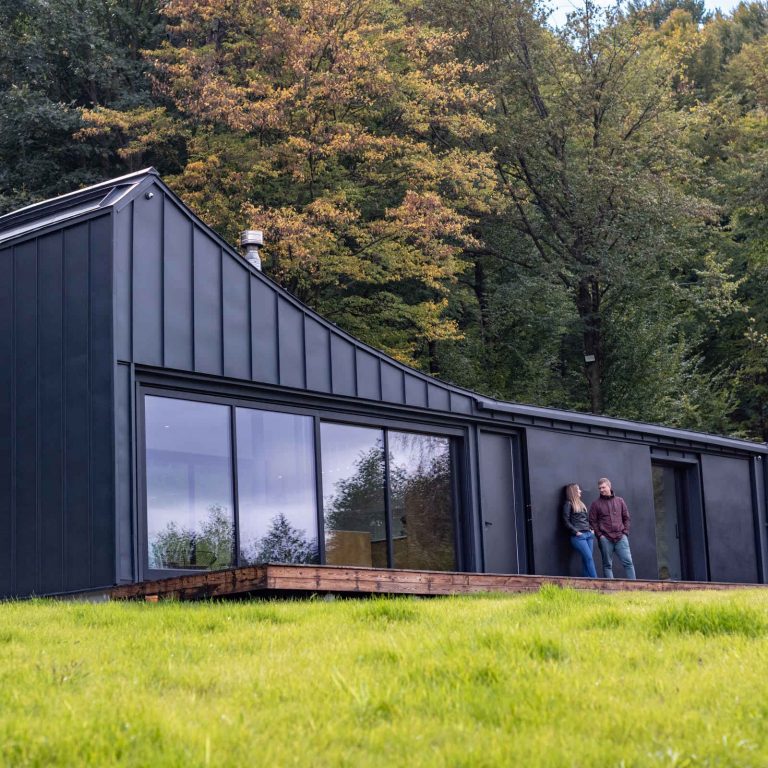Although their background is not in architecture or construction, Roman and Yaryna Bahovsky decided to invest in building eco-frіendly prefab homes. After working for a while on reforms in police and customs departments, Roman decided to shift his focus to a personal passion. Together with Yaryna, they set up a company, Cosmos, which produces prefabricated houses. They aim to change the public attitude towards private space and to challenge the notion that it has to be closed off. Their houses are open-concept and almost transparent, while the land is not surrounded by fences. The Bahovskys firmly believe that trust among neighbours must be renewed, as in the past people did not separate from each other with high fences.
In 2016, there were no competitors in the area of prefab-building in Ukraine. After hiring experienced professionals to their team, they started implementing their own ideas. The core task was to create a place of connection with nature. After building the first house and travelling abroad to gain insights from people who had done similar projects, Roman and Yaryna decided not to scale their production beyond Ukraine. They kept things local and engaged specifically Ukrainian companies instead.
Prefab building is a method of construction where components of the house are pre-built in a factory and then assembled on site. That way, the amount of construction waste and resulting pollution, typical in traditional construction methods, is reduced.
This technology also makes it possible to install the ready product at any time of year, and the construction process lasts no more than six months – from the moment the contract is signed to the actual assembly at the chosen location.
Cosmos prefab
The idea of creating a prefab project emerged when Roman and Yaryna were renovating their apartment before their first child was born. The couple had to learn new skills in all areas of repairs and construction, choose the materials and workers and manage to combine all that with their day jobs.
— We started thinking: why is it possible to buy ready products: a car, a mobile phone, a laptop, but not a house? From that moment we began forming an idea to create this product.
It took a while to come up with a name for the project. It was important to include the main concept in it, which served as the inspiration for creating everything.

We thought of the word “harmony”, but then found that “cosmos” is a more expressive synonym of this word – and it serves us well. We understood that we wanted to create open spaces, to give them a cosmic feel. To open up a cosmos inside every person by creating such a sense of open space in our design and architecture.
Later on, Roman and Yaryna had to make a financial decision: whether to buy their next apartment or invest everything in their own business. They understood that if they bought a new apartment, they would have to forget about their dream.
At the time Yaryna, who is originally from Ivano-Frankivsk, worked in another company in Kyiv (where the couple was living at the time), running several projects simultaneously:
— I believe that focusing on one project at a time is the key to success. You need to make time for work and rest. You need to unplug once in a while, regain your strength. If you have ten projects and work part-time all at once, that doesn’t work well.
Roman, who is originally from Lviv, used to work as a police officer in Kyiv. Late in 2013, after the infamous brutal attack by police on students who were protesting peacefully at Maidan square on the night of November 30th, Roman, along with many of his colleagues, resigned from the police force and joined the Revolution of Dignity. After spending that historic winter volunteering for the Euromaidan self-defense brigade, he returned to his previous job:
— After that winter, I found that as citizens, our fight is not over and I have to keep working, keep doing what I can to change the system. With that new attitude, that spark I gained during the revolution, I reapplied to my old job. I told them, come on, let me come back to the system. I know what changes I want to make because I know how you truly work on the inside. It was a long way back because obviously nobody wanted me back.
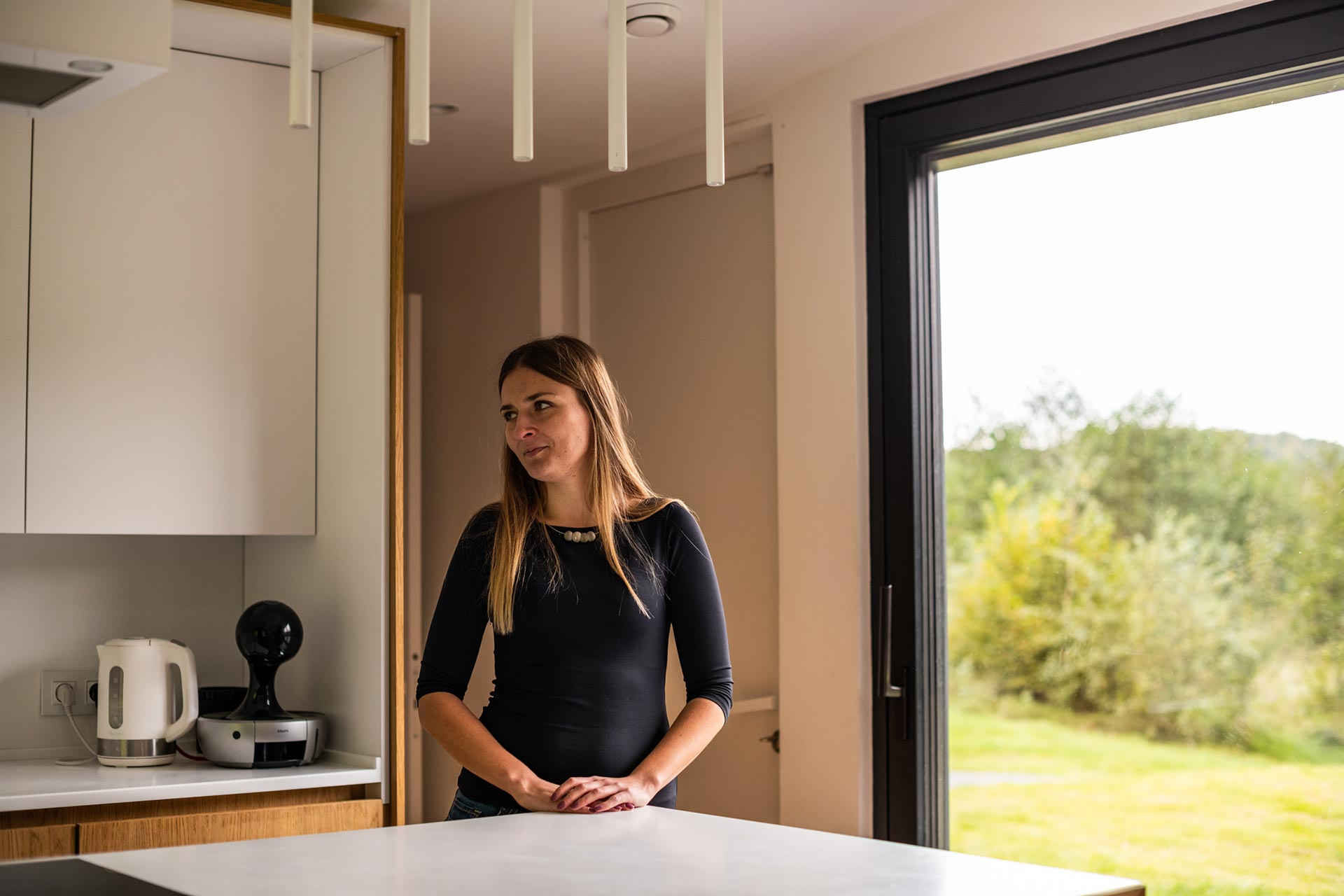
Later, Roman was invited to work at the Lviv regional administration, then to the Odesa customs office.
— By this point, I had done a lot of work and it was time to focus on myself, my family, my own business, to build a sort of microcosm I would say. Then I decided that influencing changes in the country is also possible by creating your own project, engaging cool people in the team, supporting other cool teams, telling the world about Ukraine, about its people.
Before creating a model of the very first prefab-house, Roman and Yaryna familiarized themselves with similar projects that had already been realized in Ukraine and abroad. The initial search made it clear that the market for housing production is very vast, but there is a rising demand for houses tailored to the individual needs of the customer. Such projects are not comfortable for other customers.
First, the couple reached out to architects among their own circle of acquaintances to announce the idea. Roman made the first drawings. It was a house made like an IKEA- design – modular parts to be assembled. Then the couple turned to the Beljajevy family (a family of architects with their own workshop), as Yaryna recalls:
— We hit the target 100% because they were a team that shared our values. We are members of the Plast Ukrainian scouting organization and so are they. They understand what emotions one feels being outdoors and seeing the stars, the sky. And they created an architectural design from that feeling.
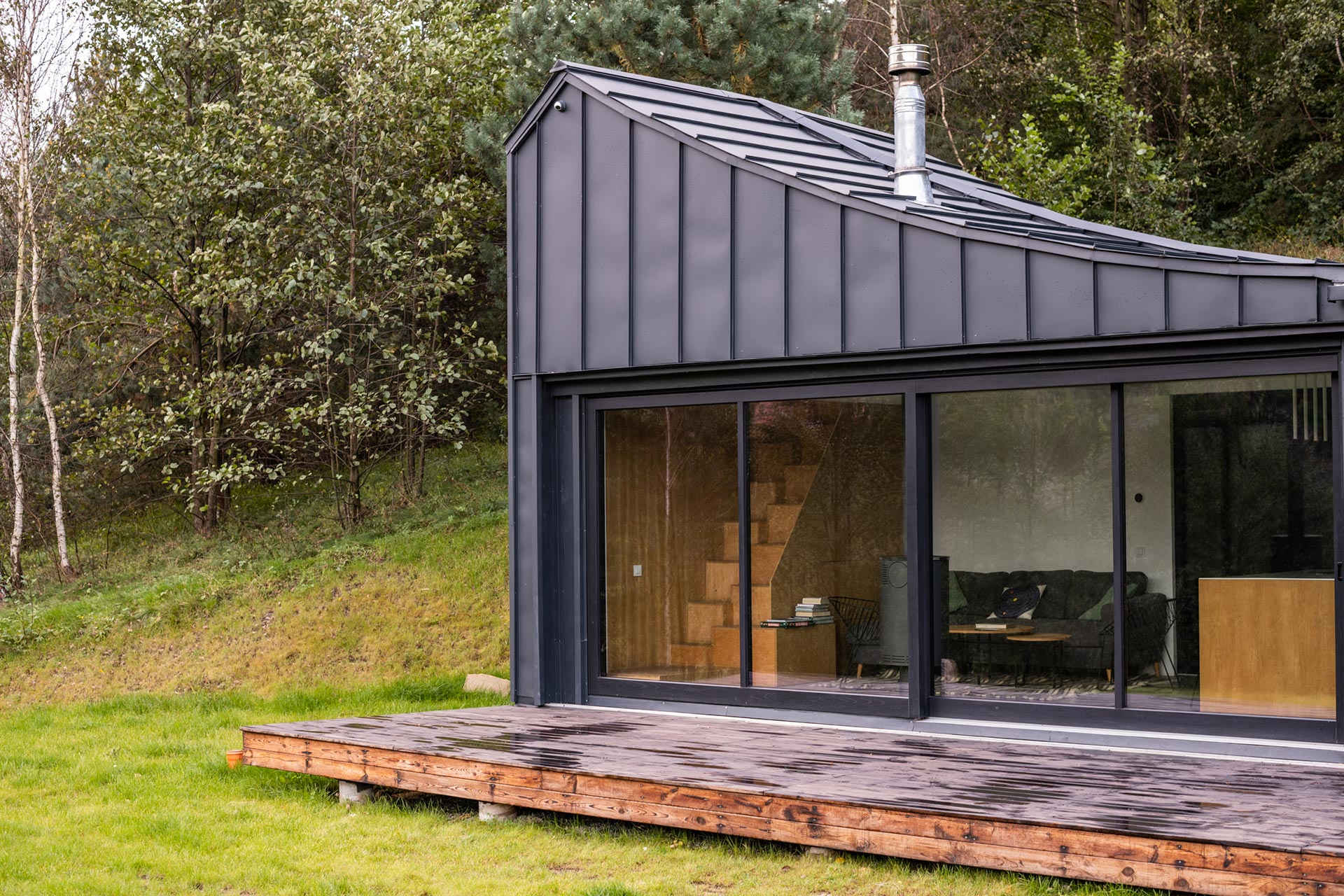
The first discussion of the project was at the end of 2016, and by early 2017 work was underway. Designing the final version took four months:
— Before starting any work, our goal was to make a house where a person would be inspired to develop different ideas. You come here, you relax, and your old dreams and desires to do something new, to go somewhere, to change something for the better — emerge. You need two things for that: the first is a sense of safety and security (because a person can only grow if they feel safe), and the other is a sense of freedom and space. We needed to combine these elements into one building.
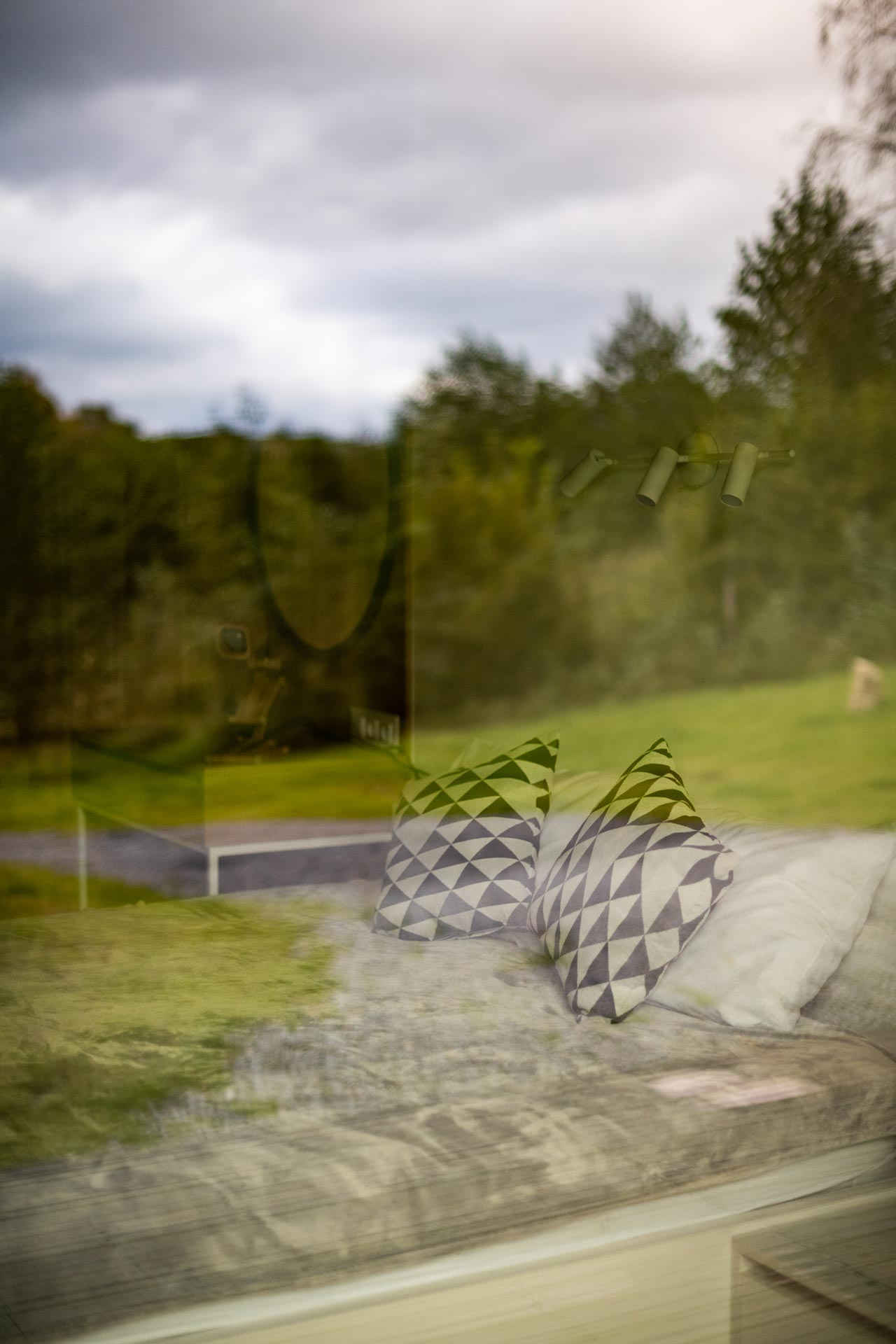
— We had this moment where we realized how driven we are by this idea. We just stepped on the pedal, so to speak, and it drove our idea forward.
The team sometimes faced challenges communicating with contractors. Many of them found it difficult to depart from the standard procedures they were used to in the traditional construction business. – Yaryna says.
— Since we are not architects, window makers, constructors, or designers, it was easy for us to propose all sorts of ideas. When we were told that something was impossible, we’d just say: “No, it’s easy, just look for solutions”.
Yaryna is engaged in marketing, development, and sales, while Roman is responsible for the production and coordination of contractors in the project. Although the couple divided up responsibilities, they always present the product together at events:
— When there is a period of many presentations, lectures, events, we sometimes think: do we really need to appear in public so much? Right now we have decided that we’ll take part in events for two weeks more, and then we need to take a break and refocus on our project because there is always the temptation to come to events and share the experience, there’s a certain feeling we always have to do that. But we need to find a balance between doing public presentations and focussing on our project, where tasks need to be done, especially at such an early stage of the company.
The Bahovskys try to spend more time together as they learn to unplug occasionally and then start working with new energy.
— Cosmos is the first team project we agreed to work on together. It is not hard or complicated. When we started working on this project, we stopped arguing in our daily life. All the little things become so unimportant, so you stop stressing out over them. Working together is really cool.
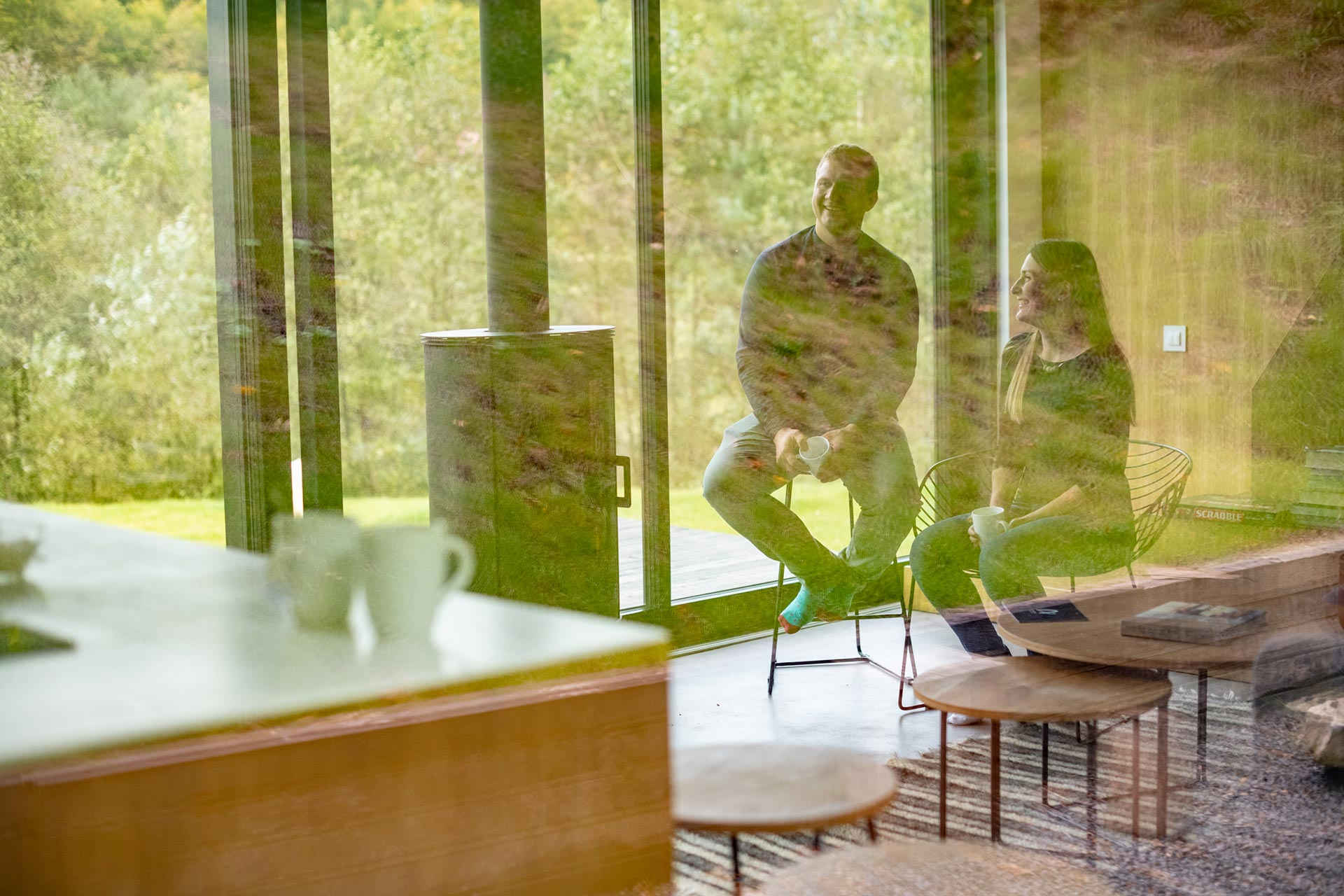
Learning from the experience of other countries
There hasn’t been a prefab-housing market in Ukraine up until recently.
That is because in Ukraine, over the past few decades, raw material industries have been more subsidized and therefore a more lucrative form of business than production or assembly. As a result, there was little to motivate young businessmen from creating quality products (both for domestic use and for export) in the latter two areas. This included things like prefab-housing:
— That is just the easiest thing to do: selling raw materials, selling wood, selling wheat. Making a product is riskier. It is a risk because customers will notice anything that is even slightly wrong with it, while all the positive aspects won’t be noticed. When you make any product you’re taking a risk for the people in your team, for the product itself, the life cycle of the product afterward, for your clients, for development in that specific sphere of business. It’s very high-maintenance. So it’s probably easier to sell raw materials right now, but I think that’s gradually going to change.
To get a sense of the market abroad, the Cosmos team went on a trip to Estonia. The local scales of prefab-housing production astounded them.
— We were so deeply impressed with everything we saw there, the way modules are lifted, how everything works, and how it gets completed. We found that this is not some novel concept, actually not new at all. Lithuania, Latvia, Estonia all export lots of these houses to Norway. And the standards are high – if something doesn’t match within 2-3 centimeters, they may send the house back.
Abroad, Ukraine is still associated with post-soviet territory, so for foreigners, it is hard to imagine that some progressive ideas are emerging here, as Roman says:
— People abroad are educated, people are progressive, so it’s surprising just how many stereotypes still exist about Ukraine and how little people know about everything that is actually happening here today. We are not a third world country, we have cool people and cool projects. So we always make sure to tell them about our other friends at home who are doing innovative work and we always try to engage them in our projects.
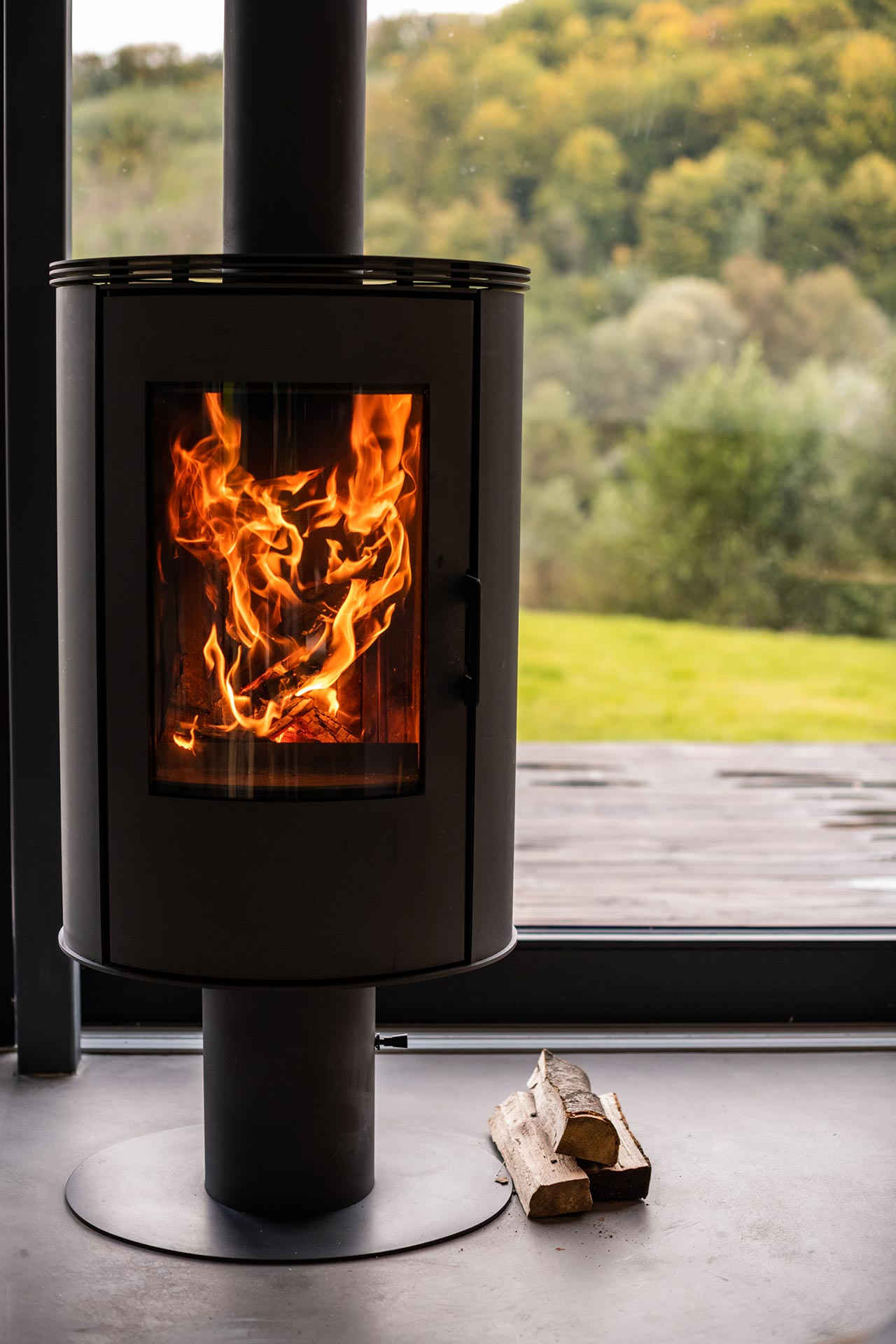
Roman says that in Europe designing and building a house by yourself is an exception rather than a norm. If a family plans to build a new home, usually they go to companies for reasonable, ready-made plans. In Ukraine, this trend is just emerging, but the couple has noticed a positive change – it’s becoming rarer for people to exploit their independence to design and build whatever they want, like large mansions
— For every dollar spent on a building, 15 cents becomes construction waste. The bigger the house – the more construction waste. This was an important consideration for our project – we planned to reduce and utilize waste properly.
The first house
The opening of the first house was in March 2017. From the outset, Roman and Yaryna decided that it would be a place for leisure. In Southern European countries, such a dwelling is called a retreat house — a place where you can come to escape the everyday and take a rest.
Searching for appropriate locations took all summer. It was important to find a cozy and serene location near Lviv:
our aim was — 30 km from Lviv at most, to make it easy to get there because if it is further away, you need to plan your trip and set aside time. This way we can go there spontaneously, and we can even bring a group of friends for an afternoon without it interrupting anyone’s schedule too much.
The landscape they originally planned and designed with visual graphics was almost identical to the place they later actually found, in a village called Maidan:
— I showed the design to people at an Italian factory and they were disappointed that it was just a digital visualization. They said: “it doesn’t exist yet?” I replied, “Yes, but we are building right now”. Visualize your dream clearly and it will come true!
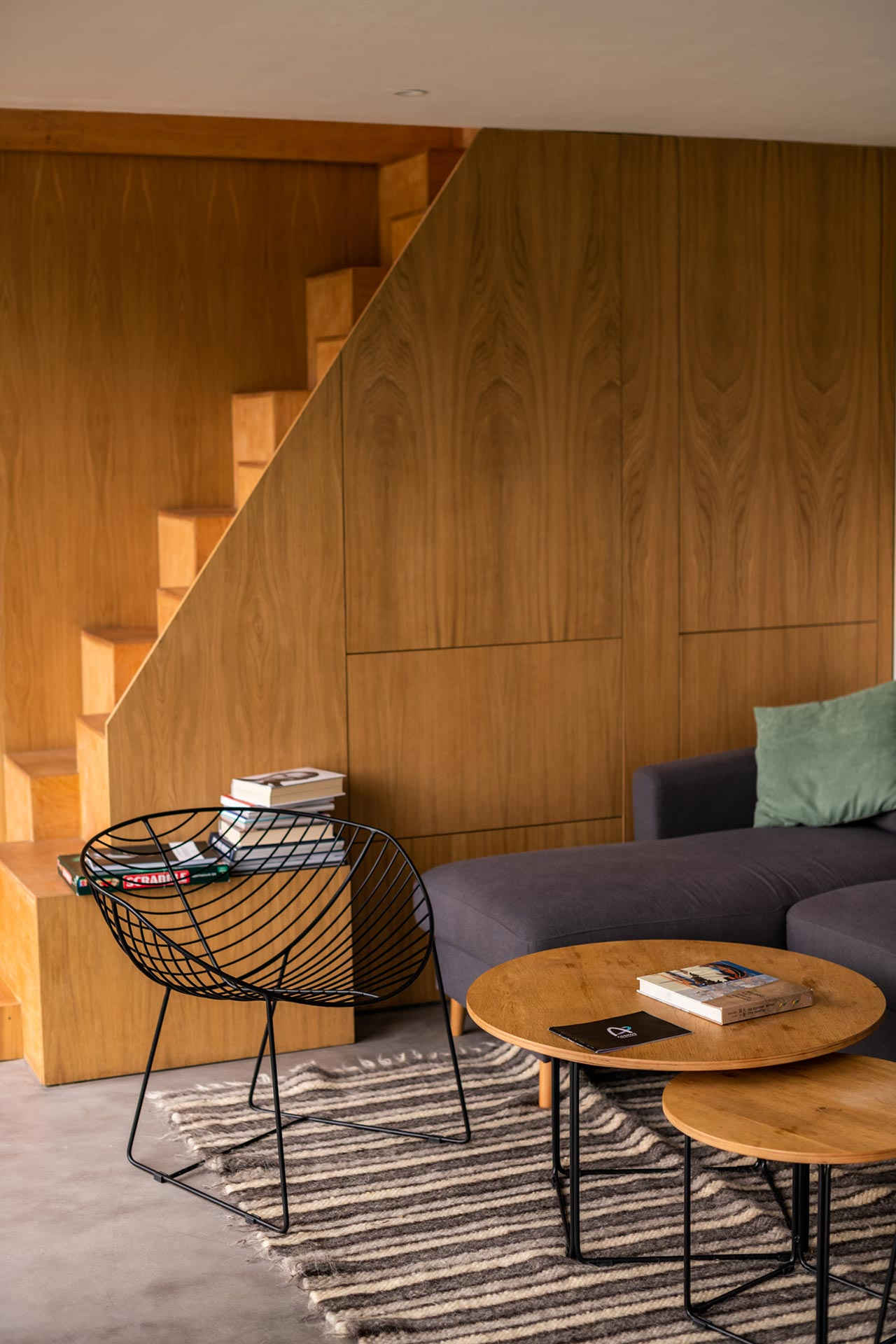
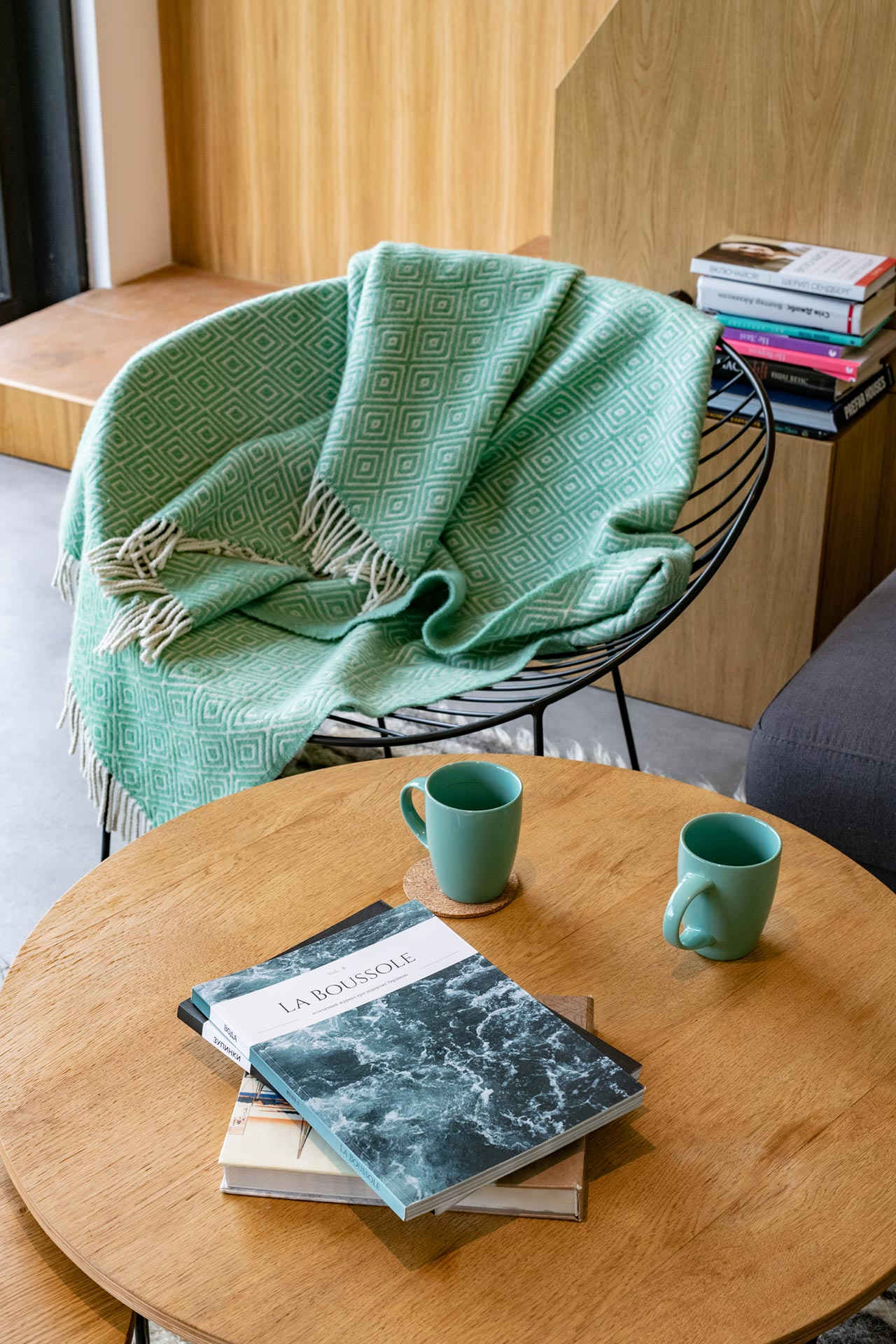
During past road trips, the Bahovsky family would always stay at different houses. They found there was often a disconnect between the building and nature outdoors. Taking this into account they tried to create a house that would blur the lines between the actual building and space around it.
— We had this romantic idea that: “This should be a place of strength and inspiration”. Then we started thinking with an architect how to come up with something valuable out of this “cliché.” Then, we realized that there is nothing but the connection between human and nature.
The interior space was designed with light colors and wooden surfaces. It was also important to create a universal design:
— We made the visual palette very simple: white, black, and wooden. It appeared that nothing more must be added, everybody liked it this way. Simple, without any additional pictures or decorative elements. People may like to add something of their own, to adapt the space for their needs but everybody likes the basis of the design.
The key thing is not how many meters there are. The most important thing is what you see from the window and all the emotions you experience.
Finishing work on the house, which they nicknamed Cosmos Spacecraft, the team took care to set up a comfortable entry way to the location. The stones from the road became another decorative element for the landscape around the building, as Roman recalls:
— I haven’t saved all of them, about half were rolled into the road, but when I came and saw those stones, I stopped the road work for a moment and managed to keep five such stones.
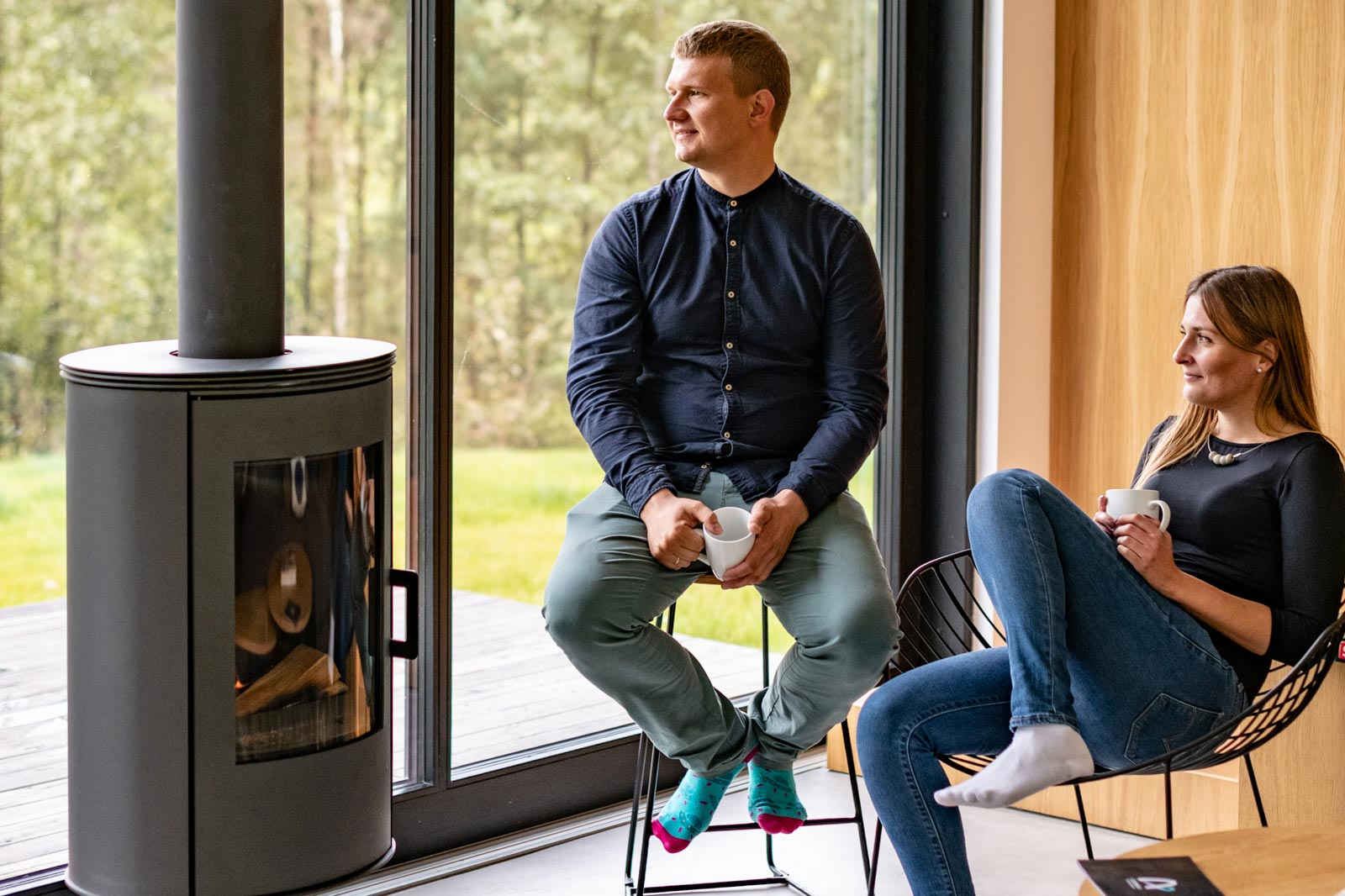
Putting every centimeter to work
As construction was completed, the team got together for a discussion about improving the space. There was a need to determine what works, and what doesn’t. We took into account the reviews of people, their recommendations and criticism, as Roman says:
— It’s a pilot project and all the drafts may be perfect, but drafts, drawings, and designs — are just visual guides, you have to actually walk into a space to see how it looks and feels inside. Only then can you really evaluate it well and find the details which must be improved.
The area of the house measures 60 square meters (not counting the terraces). Considering its size, it was important to achieve maximum comfort and usability of the space. The house includes a studio-kitchen, bedroom, bathroom, and the “window into the cosmos” – a loft where children can play or guests can stay. There is also a utility room to keep household equipment: everything from the heating boiler and lawnmower to snowboards and bicycles:
— It is possible to think through everything, how a person would use the spaces, how everyday life would take place; the minimalistic designs allow you to put a lot of thought into these details, but if you end up with the fact that you do not have a place to put some basic household things, that minimalistic design is no longer functional. You end up having to put a broom somewhere in the open, which clutters up space and counteracts that minimalistic feeling – it shouldn’t be that way. Everything should be carefully considered, just like in a car design, each centimeter serves a purpose.
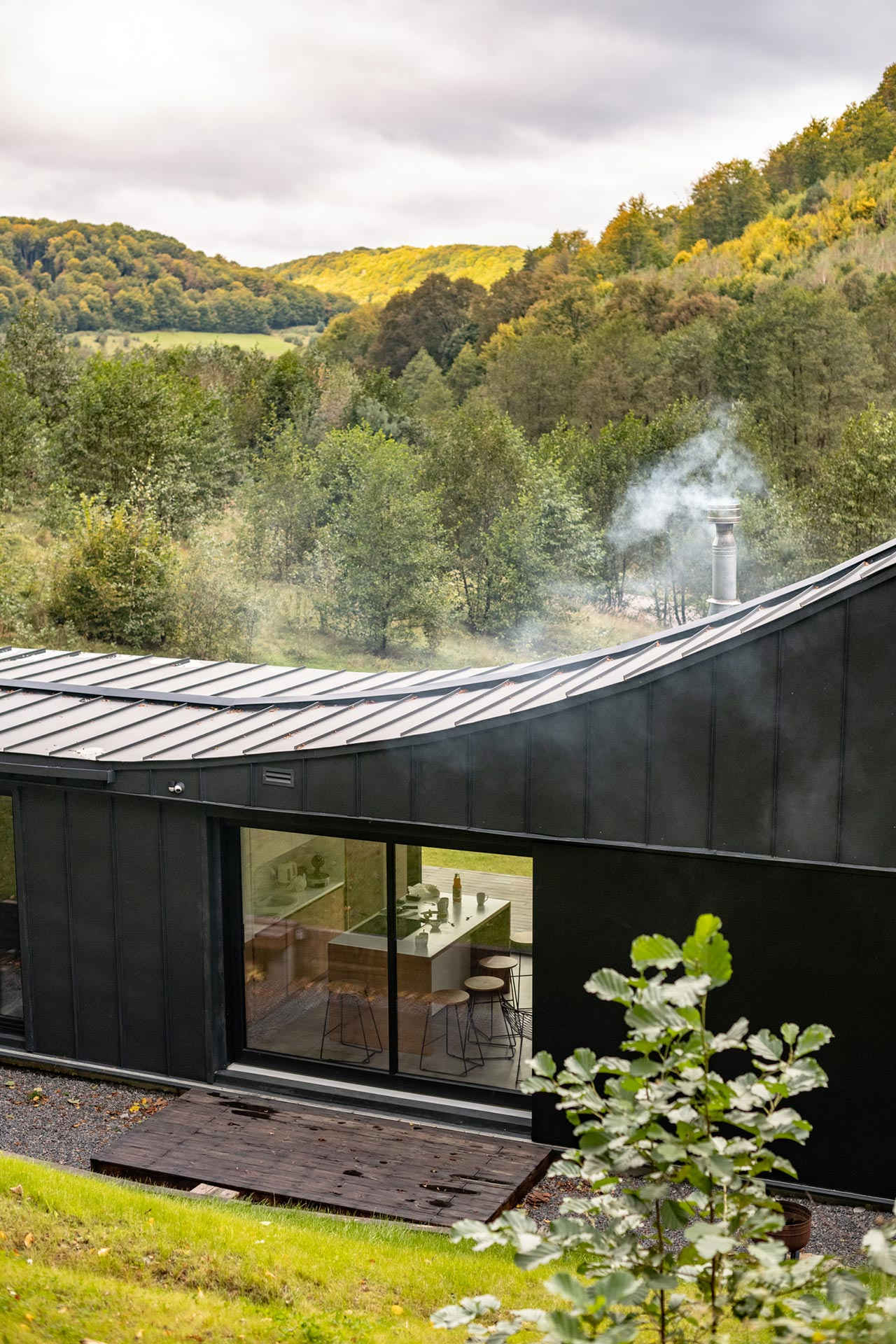
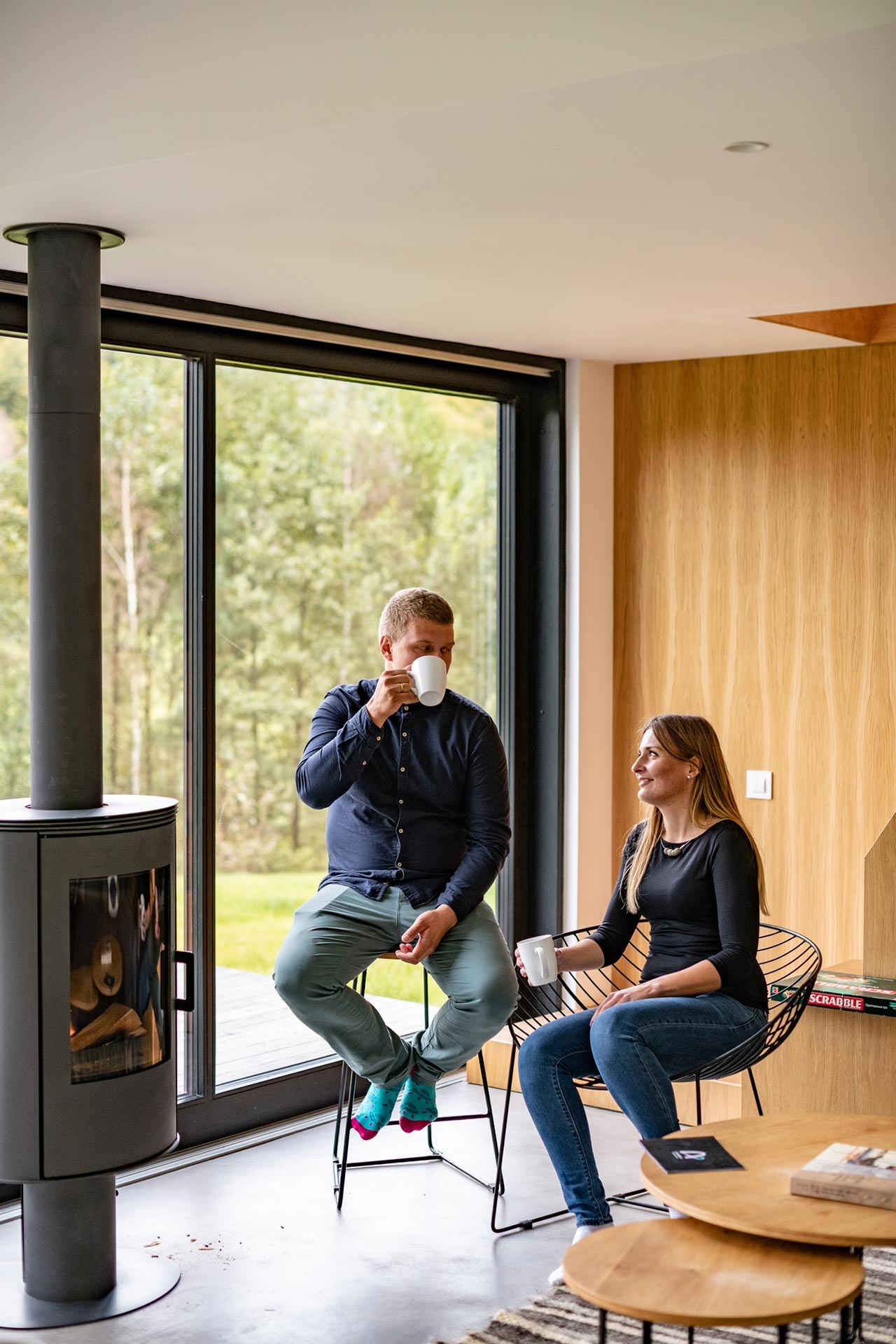
A Space Without Fences
The Maidan villagers showed great interest during the assembly of the house:
— Everything happened so quickly, I don’t know if they’ve ever seen buildings being built so quickly. We brought it in modules. It was a super special operation. The whole team was preparing for it. First of all, it seemed both impossible and possible at the same time, since it was just before the holidays and finding any contractors was very hard, but we said: “That’s it: we need to be there before New Year’s Eve!”. We found all available local crane operators, each of them had a schedule coordinated down to the second, when he’s supposed to drive out, which modules are loaded at what time, who is on-site simultaneously. And we managed to do that as we planned and it was like a building show for the Discovery channel.
Next time they arrived at the location, the team met a “delegation” of locals and made an improvised tour for them. It helped establish a good relationship with them.
Yaryna says the villagers had cautioned them about possible robberies or vandalism, but they never had any problems with that. The Bahovsky’s approach was not only to get along well with their neighbors but also to establish mutual trust and respect in the community by not putting up fences:
Actually, it worked this way in the past. In the rare cases that fences were put up , they served to prevent animals from trampling the territory. There was such openness and we have to try to bring that back . We need to bring back that trust and not to go abroad to work or work extra hard just to invest in a fence. This is the first principle of success. If the fence costs more than a house, it is probably best not to buy it.
To provide safety and general security for the house, there are cameras and motion sensors around:
— So these are like substitute fences for the house. When you invest more in a security system, when you get along well with the locals and build that safety net – you don’t need physical fences. This is all worth it for the sake of not putting up fences.
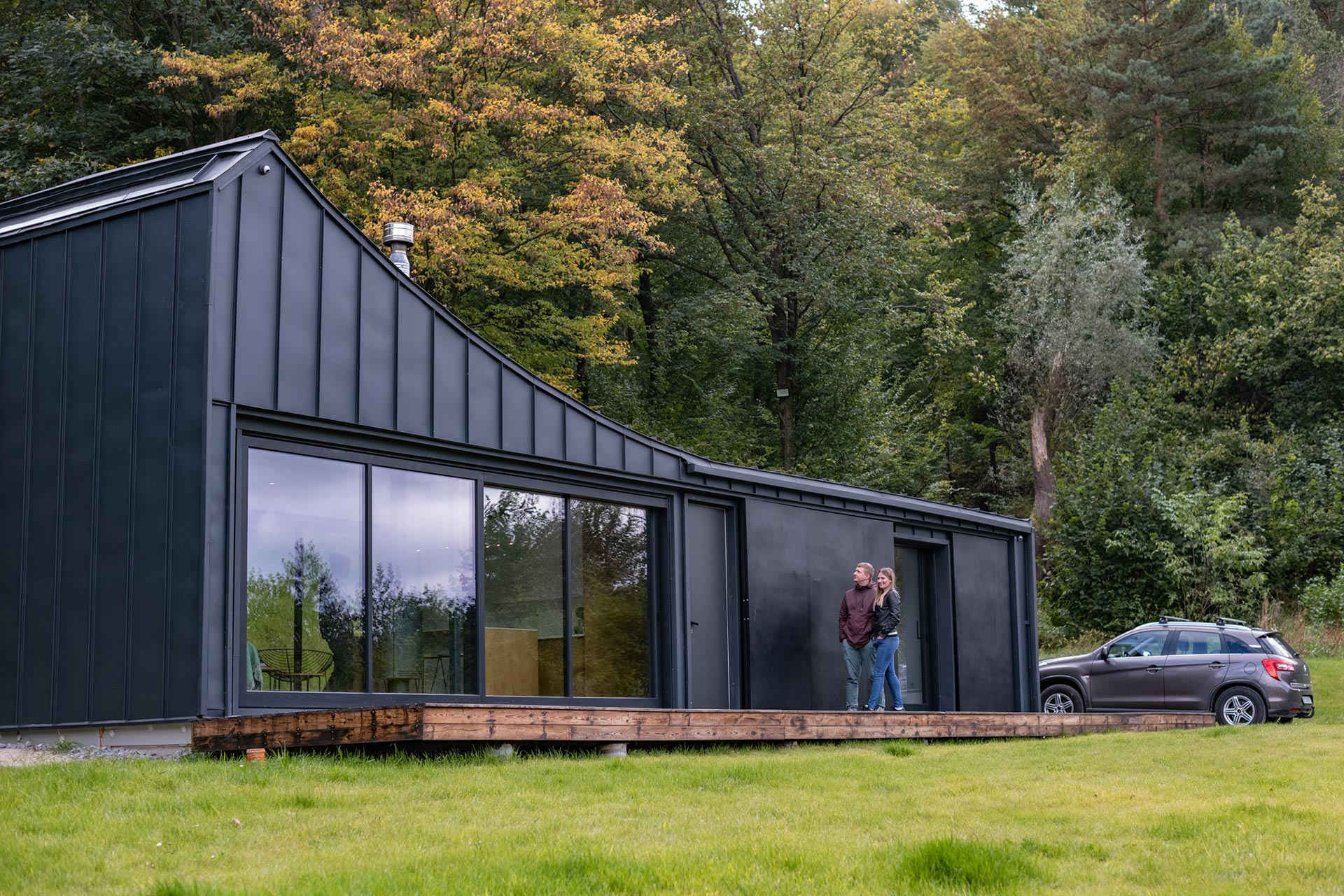
Planning the next five cosmos houses
Roman and Yaryna carefully choose locations for their houses. It is important to consider the location and traffic accessibility. A location near Kyiv is in the plans:
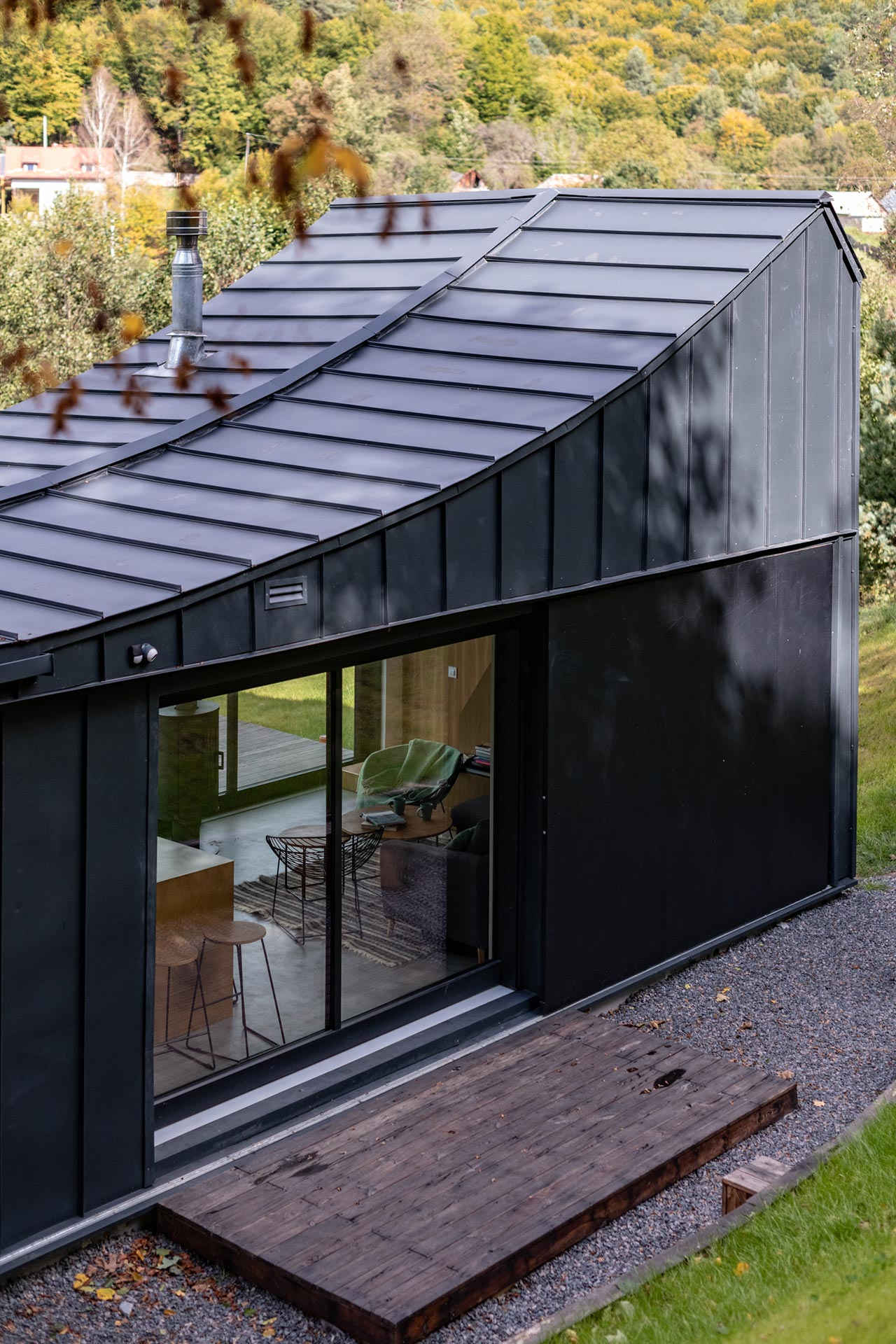
We also work near Kyiv. We understand that the second location should be there. But it’s challenging because as soon as a nice spot becomes available in the area it immediately gets bought up and developed.
The short-term plans for the project include creating five houses at picturesque, lesser known locations of Ukraine. Such retreat homes will be managed by the same principle as the one in Maidan village near Lviv. The advantage is that the Cosmos team will support all the services required.
The Bahovsky family has discussed the perspectives and uniqueness of their project with their team many times, taking into account the experience they got when they went abroad. In Yaryna’s opinion, a project like Cosmos prefab would be unrealistic to run in other countries because the conditions in Ukraine train you to be very meticulous with project-management and learn how to balance the risks:
—All risks give an impetus to be ready. The fact is that here (in Ukraine – ed.) there is a lack of many things that would otherwise give you the possibility to achieve what you want. It isn’t the same in any other country. Instead of complaining that it’s so hard here, you need to realize that these conditions are exactly those that make the impossible possible.

